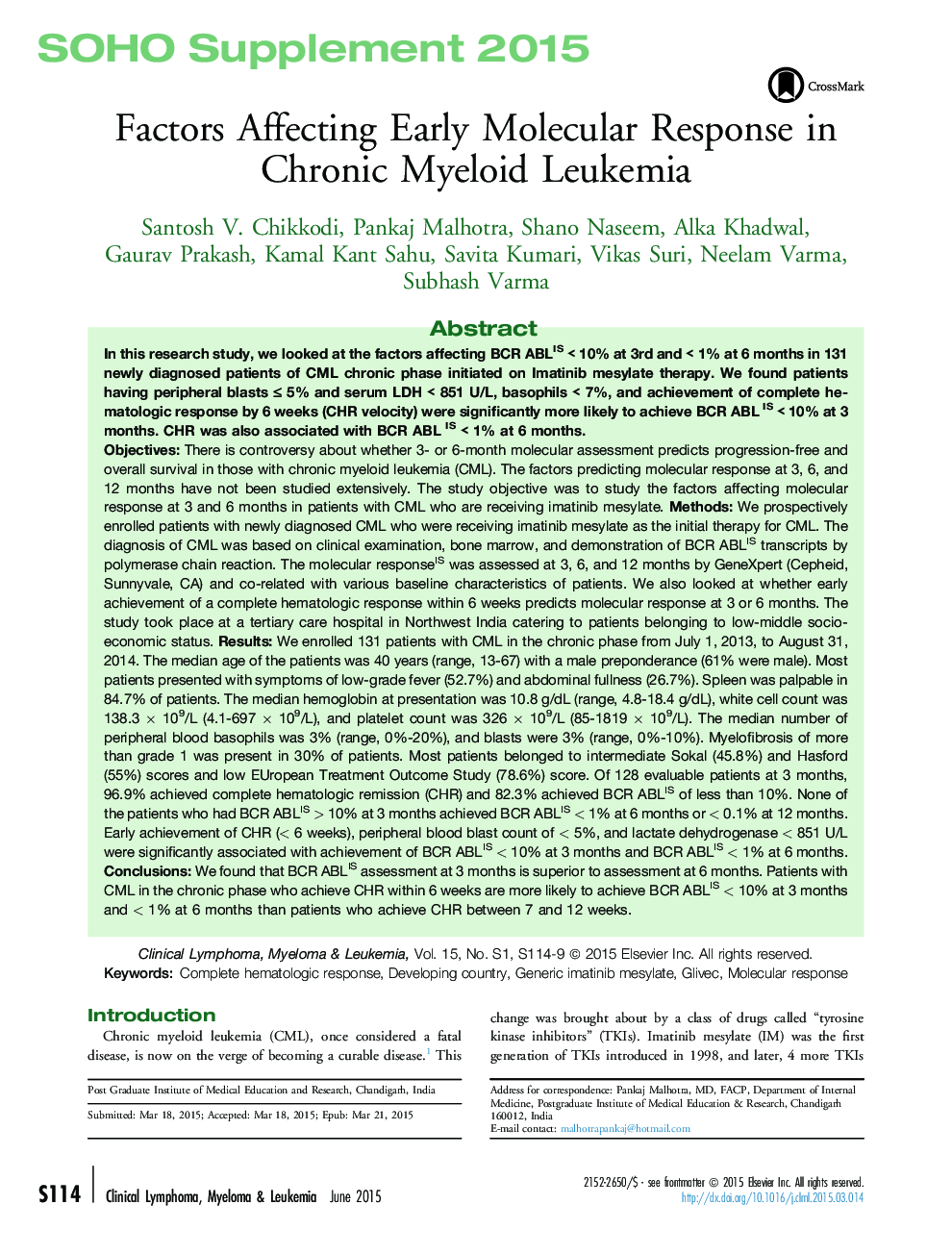| Article ID | Journal | Published Year | Pages | File Type |
|---|---|---|---|---|
| 5883076 | Clinical Lymphoma Myeloma and Leukemia | 2015 | 6 Pages |
ObjectivesThere is controversy about whether 3- or 6-month molecular assessment predicts progression-free and overall survival in those with chronic myeloid leukemia (CML). The factors predicting molecular response at 3, 6, and 12 months have not been studied extensively. The study objective was to study the factors affecting molecular response at 3 and 6 months in patients with CML who are receiving imatinib mesylate.MethodsWe prospectively enrolled patients with newly diagnosed CML who were receiving imatinib mesylate as the initial therapy for CML. The diagnosis of CML was based on clinical examination, bone marrow, and demonstration of BCR ABLIS transcripts by polymerase chain reaction. The molecular responseIS was assessed at 3, 6, and 12 months by GeneXpert (Cepheid, Sunnyvale, CA) and co-related with various baseline characteristics of patients. We also looked at whether early achievement of a complete hematologic response within 6 weeks predicts molecular response at 3 or 6 months. The study took place at a tertiary care hospital in Northwest India catering to patients belonging to low-middle socioeconomic status.ResultsWe enrolled 131 patients with CML in the chronic phase from July 1, 2013, to August 31, 2014. The median age of the patients was 40 years (range, 13-67) with a male preponderance (61% were male). Most patients presented with symptoms of low-grade fever (52.7%) and abdominal fullness (26.7%). Spleen was palpable in 84.7% of patients. The median hemoglobin at presentation was 10.8 g/dL (range, 4.8-18.4 g/dL), white cell count was 138.3 à 109/L (4.1-697 à 109/L), and platelet count was 326 à 109/L (85-1819 à 109/L). The median number of peripheral blood basophils was 3% (range, 0%-20%), and blasts were 3% (range, 0%-10%). Myelofibrosis of more than grade 1 was present in 30% of patients. Most patients belonged to intermediate Sokal (45.8%) and Hasford (55%) scores and low EUropean Treatment Outcome Study (78.6%) score. Of 128 evaluable patients at 3 months, 96.9% achieved complete hematologic remission (CHR) and 82.3% achieved BCR ABLIS of less than 10%. None of the patients who had BCR ABLIS > 10% at 3 months achieved BCR ABLIS < 1% at 6 months or < 0.1% at 12 months. Early achievement of CHR (< 6 weeks), peripheral blood blast count of < 5%, and lactate dehydrogenase < 851 U/L were significantly associated with achievement of BCR ABLIS < 10% at 3 months and BCR ABLIS < 1% at 6 months.ConclusionsWe found that BCR ABLIS assessment at 3 months is superior to assessment at 6 months. Patients with CML in the chronic phase who achieve CHR within 6 weeks are more likely to achieve BCR ABLIS < 10% at 3 months and < 1% at 6 months than patients who achieve CHR between 7 and 12 weeks.
